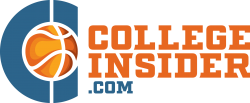Crunching the Numbers: The Math Behind College Basketball Predictions
In college basketball, predictive models aren't just a geeky tool; they're a game-changer for teams and fans alike. Coaches use these models to craft winning strategies, fine-tune player rotations, and size up opponents. Broadcasters and analysts rely on them for sharp insights and accurate pre-game predictions, making the game more thrilling for everyone.
The Fundamentals of Sports Predictions
At the heart of sports predictions are mathematical models and probabilistic approaches. These models analyze past performance data, player statistics, and situational factors to estimate likely outcomes.
Statistical Models
-
Poisson Distribution predicts the number of events, like points scored, within a fixed period.
-
Regression Analysis helps understand relationships between variables, such as player performance metrics and game outcomes.
-
ELO Ratings measure the relative skill levels of players or teams based on game results.
Machine Learning Algorithms
-
Logistic Regression is used for binary outcomes like win/loss predictions.
-
Neural Networks identify complex patterns in large datasets, making them ideal for nuanced predictions.
-
Random Forests improve prediction accuracy by reducing overfitting.
Bayesian Models
Bayesian inference updates prior knowledge with new evidence to improve predictions, effective in dynamic sports environments.
Impact on gambling and online casinos (slot siteleri)
The math behind predicting college basketball games also applies to gambling and online casinos. The same models and probability calculations are used. Gaming sites use RNGs for fair play. For our Turkish readers, the website https://slots-siteleri.com/ offers newest slot sites, known locally as "en yeni slot siteleri." These strategies help players make better decisions in both sports betting and casino games. For example:
-
Card Counting in Blackjack involves keeping track of high and low-value cards to alter bets and decisions.
-
Roulette Systems like the Martingale strategy use probability theory to manage betting patterns.
-
Poker Probabilities involve calculating the odds of hand outcomes to make informed betting decisions.
Real-World Applications in College Basketball
Predictive models in college basketball aren't just for show—they help teams up their game and keep fans hooked. Coaches rely on these models to plan killer strategies, tweak player rotations, and scout out the competition. Broadcasters and analysts use them to dish out sharp commentary and spot-on pre-game predictions, making the whole experience more exciting for everyone.
Key Metrics in Basketball Predictions
-
Points Per Game (PPG) indicate a team's offensive strength.
-
Defensive Efficiency measures points allowed per 100 possessions.
-
Rebound Rate shows the percentage of missed shots retrieved by the team.
-
Turnover Rate reflects the percentage of possessions ending in turnovers.
Advanced Analytics
-
Player Efficiency Rating (PER) summarizes a player’s statistical accomplishments.
-
Win Shares estimate the number of wins a player contributes.
-
Adjusted Plus-Minus (APM) measures a player's impact on team performance.
Final Thoughts
The blend of sports predictions, gambling, and online casinos is a fascinating area where math and probability are key. By understanding these models, you can gain deeper insights into college basketball and beyond. Whether enhancing your game-watching or exploring the newest online slot sites, knowing the odds leads to better decisions and a more engaging experience.


